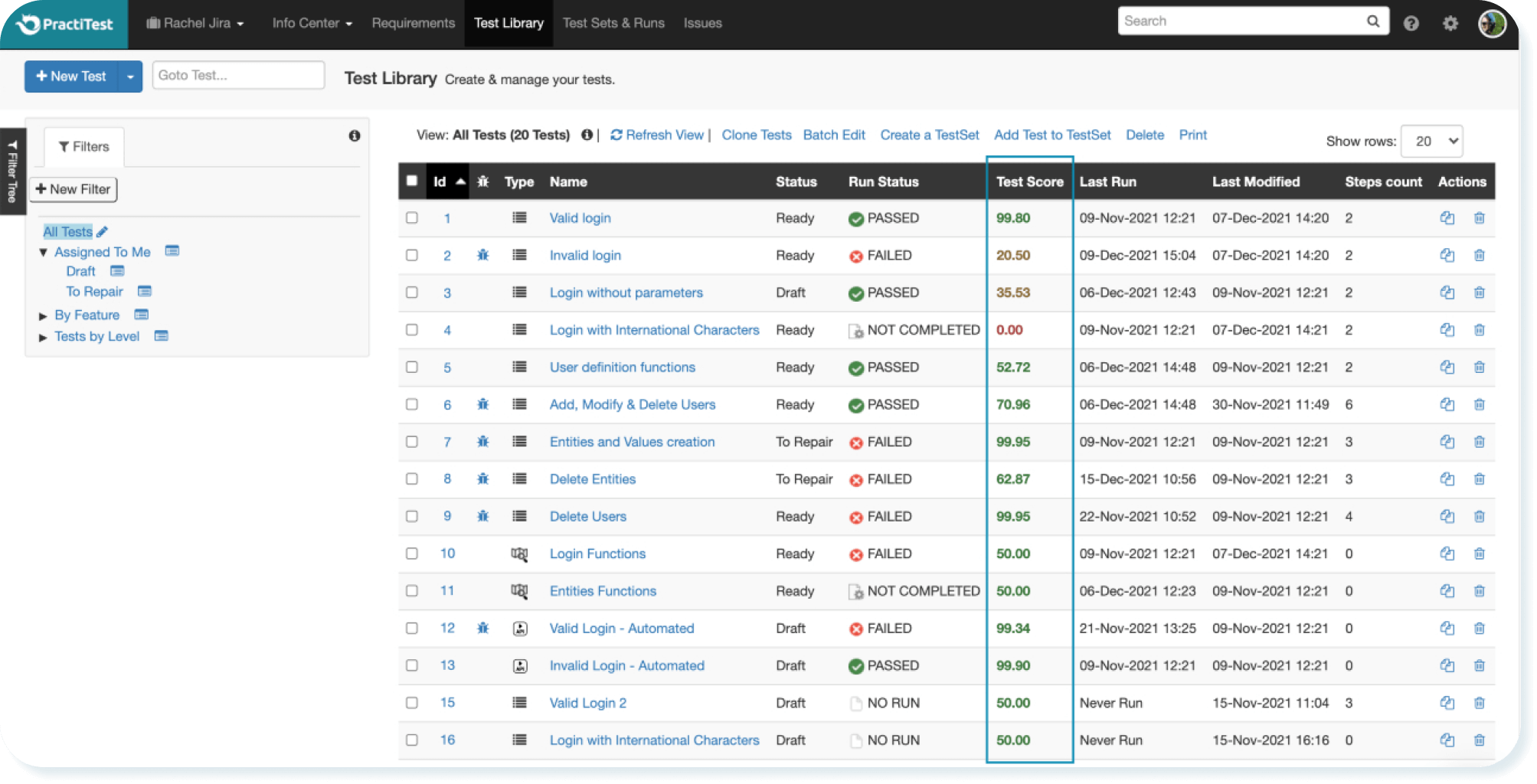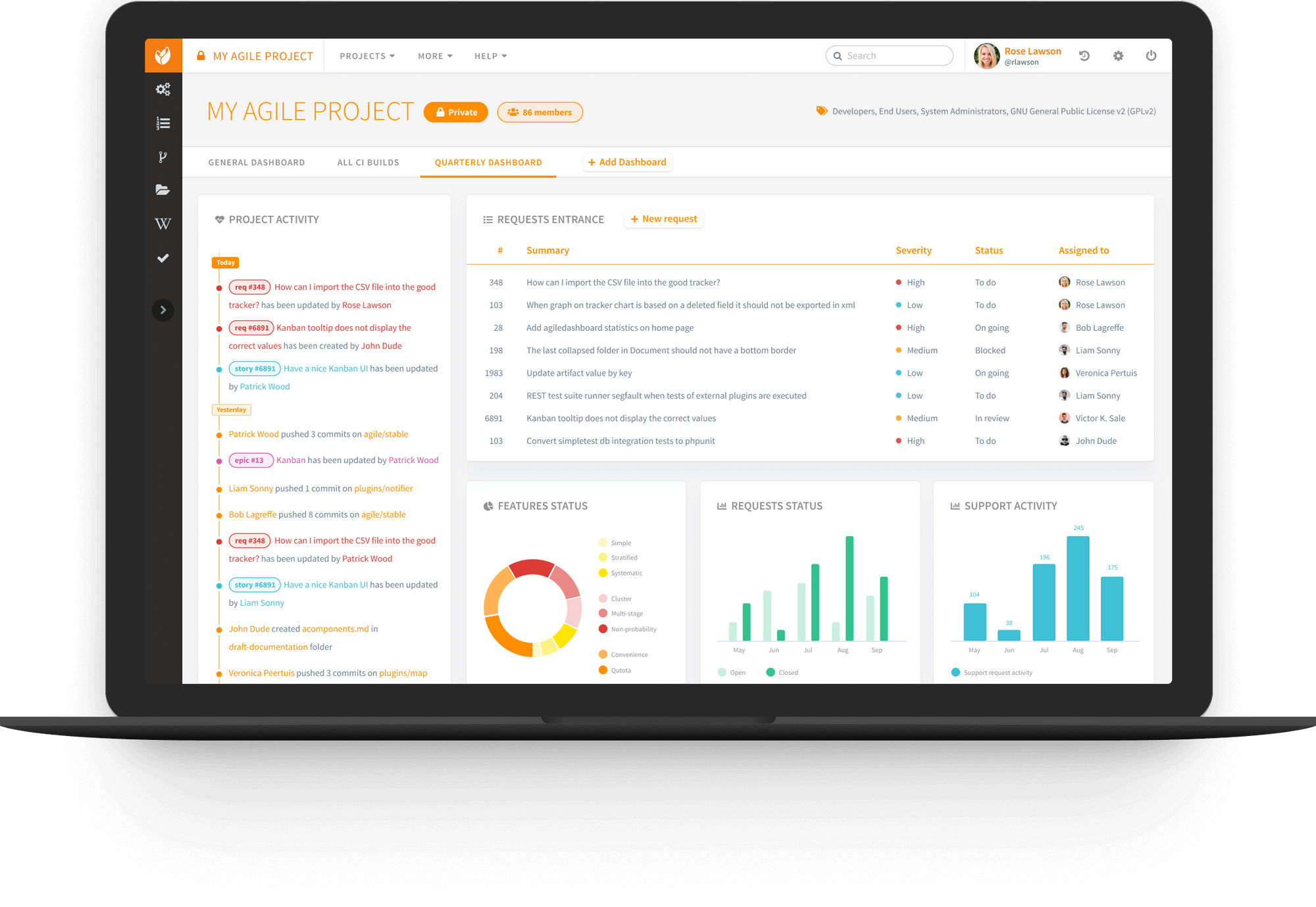In this article
- Dire mistakes to avoid when picking a test management solution in Insurance
- Top 5 test management solutions in Insurance
- Insurance test management solutions checklist
Mistakes to avoid
Regulatory compliance is the biggest issue when it comes to test management solutions for insurance. Not all test management solutions talk much about it, so you will have to verify yourself whether they guarantee and/or help you obtain the relevant certifications. Here are just some examples from my experience servicing German clients:
- ISO 9001
- BRSG
- IFRS 17
The level of traceability is also a major concern. Any modern solution probably has a history of changes done to tickets, but that’s not enough. The list of changes should cover both active and archived tickets, track both current and former employees, and have a version that cannot be edited. You’d also need to log changes to both tickets on the server and the server itself, e.g. admins resetting someone else’s password. General-purpose solutions without regulated industries in mind may not provide that.
Not planning for adequate access security can be a major setback. The immediate concern is the lack of On-Premise offering. Cloud-only solutions cannot always be used in insurance, so that often eliminates new and hip tools that haven’t branched out yet. You should also think (and inquire) where your test management server is hosted: European companies, for example, can’t just store data in the US.
Skimming over actual functionality could mean subpar testing or a frustrating experience at the very least. You should look at whether the user interface is intuitive enough. You need to consider whether a tool is built for large testing volumes, since they are inevitable in regulated industries. The execution of major functionality like test automation, reporting, Agile sprints is a factor as well — even if these are technically not essential features.
Best test management solutions for Insurance
aqua

aqua cloud was launched in 2013 by the German andagon group, which provides IT consulting services since 2001. The company specialises in highly regulated industries, reflected by dedicated solutions pages for both banking, insurance, and government agencies. Some of the clients are over 5 government agencies, the insurer Nürnberger Versicherung, and Atruvia AG, a 22,500-employee IT service provider with a prominent banking portfolio.
aqua is fully compliant with the ISO 9001, BRSG, and IFRS 17 certifications. The tool doesn’t let the extra work go to waste, as extensive logging brings extra functionality such as reverting changes through the project’s lifespan.
Security is another prominent aspect of aqua. The company hosts on-premise servers in Germany but also enables you to run an aqua server in-house. There are over 100 separate user permissions; both SAML and LDAP are supported for user management. Even third-party integrations are designed with security in mind: the extensively documented REST API implementation uses oauth2 tokens for authentication in a regulatory-compliant way.
The main criticism for aqua is mostly about reporting and interface-based feature differences. Reports, while offering great depth, can be a bit tricky to set up and require the ALM licence to create new templates. Some features of the desktop client may be unavailable in the web version, but patch notes indicate progress there (most recently adding Agile functionality).
Practitest

Practitest (American company founded in 2008) is a proven solution that tries to do it all. They are both test management and lifecycle application management tools. Some of their prominent clients include McAfee, Johnson & Johnson, and McDonald’s.
The key selling point of Practitest is giving management understanding and control. They emphasise customisable dashboards and high-level overviews. The company also highlights reusability through proper management of test steps.
There are some nice-to-haves, too. Practitest match aqua’s 24-hour support turnaround and have a decent wiki to help you find an answer yourself. They offer a cheaper Developer licence for browsing and issue management, which is slightly different from the free view-only tier found in aqua and other tools. Practitest supports REST API for extra third-party integrations.
As far as negative reviews go, what users mention can be frustrating but not critical. Manual testing can be a bit tiresome in terms of both training for it and sending findings to a Jira server. Adding filters can be a chore, and so is getting through a myriad of notifications.
Before we move on to the third solution on the list, let’s engage you in an interactive snippet where you can include your requirements and see which solution fits your requirements the best:
Polarion

Founded in 2003 and acquired by Siemens 12 years later, Polarion is a staple of test management. Their biggest regulation-heavy client is the central bank of Germany, and Polarion also showcases about a dozen of European private banks and FinTech companies.
Polarion strongly emphasise their traceability features. The software logs all changes so you can demonstrate them to regulators and even automatically self-audits the log.
Another highlighted point is reusability. Polarion suggests cross-linking projects and requirements to reduce redundant work, automating workflows on the project and/or release level, and reusing tests. Polarion is an ALM solution, meaning that your developers can benefit from some of this functionality too.
Some relatively minor complaints about Polarion include the lack of documentation for some integrations and poor reusability of reports. The fundamental issue, however, seems to be performance at scale, as pointed out by several G2 reviews and explored in this one:
Even if it is one of the best tools I have ever used, what I personally love and also dislike at the same time is the backend based on the Subversion. I love it, because thanks to its nature Subversion saves everything in a real concrete storage, with no possibility of data loss. My personal dislike is based on the fact that even [though] Subversion can store millions of revisions, it is file-based, so it may become quite slower than expected after some years.
Summing up, Polarion is great and most reviews corroborate that. Performance, however, can be a deal-breaker. If you’re an insurance provider looking for a test management solution, I strongly suggest that you discuss this potential issue with the sales team before proceeding.
Tuleap

Tuleap is an application lifecycle management solution created in 2011 by the French company Enalean. Similarly to aqua in Germany, they have several government agencies as their clients; the most recognisable private client is Airbus.
Tuleap’s biggest strength actually lies outside of its key functionality. Tuleap is an open-source solution, which by default guarantees simple migration to and from the solution. Some extremely security-sensitive businesses, such as banks and government agencies, will find extra comfort in reviewing the source code themselves.
On the functional level, Tuleap emphasises supporting both Agile and Waterfall methodologies, KPI-minded dashboards, and continuous development tools. Naturally, test management is part of the package as well. Tuleap also supports REST API.
Tuleap is mostly rated negatively for native integrations. Some plugins are more outdated than others, and the IDE integrations seem to be lacking as well. Documentation management has been labelled old-fashioned by some users, and user permissions are not as granular as some security-conscious companies might expect.
TestRail

TestRail is a test management solution (not ALM) from the American company Gurock founded in 2004. Their featured clients are mostly IT companies, but they are also the IT companies: Apple, Microsoft, Intel, Amazon, and more.
TestRail prides itself on active and innovative development. Indeed, even if there have been significant gaps between new releases (e.g. April 2021 – September 2021), new versions keep adding cool features. Some are far from groundbreaking, such as adding shared test steps as late as February 2021. Others are the opposite: their FastTrack three-pane review is great for big screen and dual monitor setups.
Other than that, TestRail provides a solid suite of tools for test management. Tests are conceptually reusable; reporting is very visual and can be scheduled; the admittedly limited automation integrations can be expanded via REST API. TestRail also provides an on-premise version.
The biggest functional criticism of TestRail actually concerns test reusability. Long-time users point out that it’s impossible to move test runs to different test plans. Bulk search and replace within test cases is not possible either. Many reviews also mention that the user interface is old and takes time to train colleagues into.
Insurance test management solutions checklist
To recap, here is what you should look for in a test management solution as an insurance provider:
☐ Fits regulatory requirements
☐ Has efficiency-driven general features (Reporting, Agile, Reusability, etc.)
☐ Handles large testing volumes well on the fundamental level
☐ Provides REST API implementation for in-house and third-party tools
☐ Brings reasonable tools for migration in and out


















